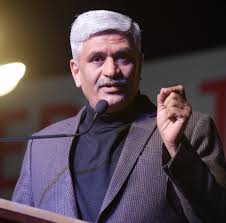Govt's decision to build two new dams will rejuvenate River Yamuna: Jal Shakti Minister

- Country:
- India
Noting that 98 percent of pollution in the Yamuna river comes from the two percent stretch of the river that flows in Delhi, Jal Shakti minister Gajendra Singh Shekhawat said the government's decision to build two new dams would lead to ''rebirth'' of the polluted river.
The government has extended the Pradhan Mantri Krishi Sinchayee Yojana (PMKSY) under which a 90 percent grant has been given to three national projects including Renukaji in Himachal Pradesh and Lakhwar in Uttarakhand.
In an interview with PTI, the Jal Shakti minister said the construction of the Renukaji and Lakhwar dams would be critical for the national capital's water supply needs and also lead to ''rebirth'' of the river.
''Like in the case of Ganga, it has been notified that all dam holding stakeholders have to discharge a particular quantum of water in non-monsoon months. Similarly, we will make it mandatory that some amount of water has to flow in the Yamuna too. If effluent treatment plants are working, then fresh and treated water both will improve Yamuna's water quality,'' he said.
On the issue of pollution in the River Yamuna, Shekhawat said just two percent or 22 km of Yamuna falls in Delhi but 98 percent of pollution in the Yamuna comes from Delhi so the reason for high pollution in the national capital is untreated or semi treated industrial effluents or sewage that is being discharged into the river in this 22 km stretch.
The over 1300-km-long Yamuna river is among the most polluted rivers in the country.
Shekhawat said the Delhi government keeps blaming the Uttar Pradesh and Haryana governments for the pollution of Yamuna while in reality Delhi's effluent treatment plants are not up to the mark and sewage treatment plants also need to be upgraded by the city government. ''Water being a state subject, it is the state's responsibility. So by working on the rejuvenation of Yamuna, we are fulfilling their responsibility. For any project, the Centre can give technical or financial assistance. Ultimately conceiving a project, augmenting it, implementing it, and operating and maintaining it is the responsibility of the state. The Delhi government has failed in that,'' Shekhawat said.
He said even the projects conceived in 2012 have not been completed yet by the Delhi government. ''To conceive and implement any project takes two three years, and for them (Delhi government) the tendering process itself took three years. The (city government) said they will establish a decentralized sewage treatment plant in Chattarpur but in five years they have not even secured land for it. They are just making promises,'' he said.
Under the Jal Shakti Abhiyan, all states have been asked to geotag all the water bodies they have and make a repository. ''We should not lose water bodies in the future. The process is on and data collection is going on it and that entire information will be available in the public domain,'' Shekhawat said. On groundwater rejuvenation, the minister said for the last few years awareness has increased among people on the subject. Noting that the geographical and underwater conditions of each state are different from another, the minister said if groundwater activities are based on them then better results can be seen.
''We have started aquifer mapping and 80 percent of it has been done, and taking it to the micro-level we will be using Australian technology. Till now traditional technology was being used. We have identified vulnerable regions facing maximum critical issues and are aiming to finish it in one year span. Simultaneously in the Jal Shakti Abhiyan, an investment of Rs 56,000 crore has been made in ground water-related activities,'' he said.
Under the Atal Bhujal Yojana, investment is being made in select districts of seven states with the lowest level of groundwater availability, he added.
(This story has not been edited by Devdiscourse staff and is auto-generated from a syndicated feed.)










